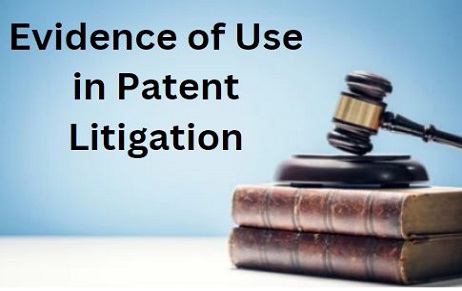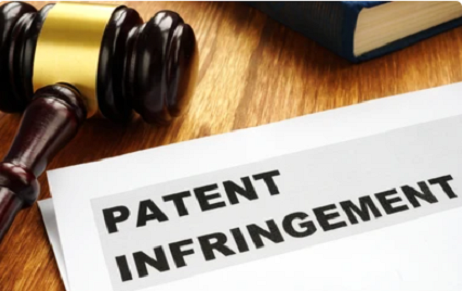All over the world today businesses strive for growth by maintaining a competitive edge in…
Inherent Anticipation: In re Montgomery
The Federal Circuit in this case addressed the issue of anticipation by inherency in the context of the method of treatment claims. The panel affirmed that a claim to ‘a new use for a known compound’ was inherently anticipated by a reference which disclosed a plan for a proposed clinical trial that had not been carried out and the results of the trial were not obtained until after the effective filing date (priority date) of Montgomery’s patent application.
Before discussing this case in particular, let us first see what inherent anticipation is. It is well-known that a prior art reference can defeat patentability under 35 U.S.C. § 102 by expressly disclosing all of the elements of a claimed invention. However, the prior art reference may also anticipate if an apparently missing element of the claim is inherent in the prior art. Thus, the prior reference can also defeat patentability without having to expressly disclose all of the elements in the claim. The elements may simply inhere in a disclosed composition or process. This latter type of reference is said to be called as “inherent anticipation.” In relying upon this doctrine, one must provide a basis in fact and/or technical reasoning reasonably to support a determination that the allegedly inherent characteristic necessarily will be present if the teachings of the prior art are followed. The fact that a prior art source may possibly possess the elements of the claimed subject matter is not sufficient to anticipate the claimed subject matter. Thus, Inherency must be a necessary result and not merely a possibility.
In re Montgomery, the patent application at issue (U.S. Patent Application No. 11/118,824) is directed to inhibitors of the renin-angiotensin system (RAS).
The claims at issue were the following:
42. A method for the treatment or prevention of stroke or its recurrence, wherein said method comprises administering, to a patient diagnosed as in need of such treatment or prevention, an inhibitor of the rennin-angiotensin system, said inhibitor having a ClogP of greater than about 1.
43. The method as claimed in claim 42, wherein the inhibitor of the rennin-angiotensin system comprises at least one inhibitor of angiotensin-converting enzyme.
45. The method as claimed in claim 43, wherein the inhibitor of angiotensin-converting enzyme comprises ramipril.
The USPTO Patent Examiner had rejected the claims as anticipated by four prior art references. The USPTO Board of Patent Appeals affirmed the rejections and on appeal, the Federal Circuit focused only on one reference, the HOPE reference: “The HOPE (Heart Outcomes Prevention Evaluation) Study: The Design of a Large, Simple Randomized Trial of an Angiotensin-Converting Enzyme Inhibitor (Ramipril) and Vitamin E in Patients at High Risk of Cardiovascular Events, 12 Can. J. Cardiology 127 (1996)”. The HOPE reference described the design of a large clinical trial of administering ramipril and vitamin E with the objective of preventing myocardial infection, stroke, or cardiovascular death. The HOPE clinical trial study found that patients receiving ramipril had a significant reduction in the risk of stroke, however, these results were not published until after Montgomery’s priority date.
The case also contains an interesting discussion regarding anticipation by inherency between the majority opinion and the dissenting opinion. The majority determined that the claims were inherently anticipated by the HOPE reference, which discloses a plan for a clinical trial. The majority opines that for a prior art reference to inherently anticipate a method, the description of the method in that reference does not need to be carried out in fact—that is, the description of the method need only enable the claimed result. However, in the dissent, the Judge emphasized on the importance of inevitability, stating that “were inevitability not required for inherency, a mere proposal for further experimentation could anticipate a claimed invention”.
The majority pointed out that the HOPE reference discloses a detailed protocol for the administration of ramipril to stroke-prone patients, and that administering ramipril to stroke-prone patients “inevitably” treats or prevents stroke. The majority stated that inherent anticipation requires that the claimed method have been actually performed, and that HOPE does not disclose the actual performance of the method: “We stated [in Schering, 339 F.3d at 1381] that anticipation ‘requires only an enabling disclosure,’ not ‘actual creation or reduction to practice,’…the prior art patent inherently anticipated as long as it ‘disclose[d] in an enabling manner the administration of loratadine to patients.’ Id. At 1380; see also SmithKline Beecham Corp. v. Apotex, 403 F.3d 1331, 1343-1344 (Fed. Cir. 2005).” Thus, the majority determined that the HOPE reference inherently anticipates the claims at issue, emphasizing that it did not matter whether the HOPE clinical trial actually had been carried out because anticipation requires only an enabling disclosure.
In the dissent, Judge Lourie disagreed with the majority’s reasoning. The dissent points out, “[a]n invitation to investigate is not an inherent disclosure” and emphasized that the keystone of the inherency doctrine is an inevitability. The dissent determined that the HOPE reference failed to meet this requirement of inevitability because the HOPE reference “truly expresses only a hope, not achievement of that hope”. He noted that “a mere description of a process that, if it had been carried out, might yield a particular undisclosed result is not inherent anticipation of that result.” It would be interesting to see how the inherent anticipation is analyzed in view of these two differing opinions in the future.
About the Author: Meenakshi Khurana is a Patent Attorney at K&K and is available at [email protected]


